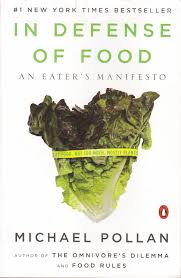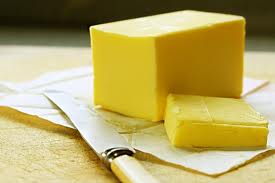This New York Times best seller is a book that everybody should read but most probably won’t. So as a public service, I decided to write a summary of it. Here are some of the most profound ideas in the book.
Pollan starts by sharing this mantra: “Eat food. Not too much. Mostly plants”.
He then describes “Nutritionism”: our idea of food broken down as individual nutrients and why that has become a problem for modern eaters. We have begun to think of food as its parts: carbs, fats and proteins, totally missing the completeness of food and even its social implications.
Scientists typically study the individual components of food and are constantly baffled (or happy to report, depending on who is funding the study), that these parts are rather insignificant on their own. Studies often totally miss the wonderful things that nutrients can do because they insist on studying them as if they exist in a vacuum. Furthermore, when industry funds nutritional research, conclusions find favourable results for their products.
Some interesting facts:
- ¼ of Americans suffer from metabolic syndrome (a combination of medical disorders that increase the risk of developing cardiovascular disease and diabetes).
- 2/3 of Americans are overweight and diet-related diseases kill most people.
- The more we worry about nutrition the less healthy we have become.
- Despite our poor eating habits, western medicine is keeping us alive. We haven’t reduced heart disease; we’re just surviving it because of the progress we’ve made in emergency rooms and developing certain drugs and surgeries that prolong our lives, but not necessarily the quality of life.
- An estimated 80% of diabetes can be prevented by diet and exercise.
- There is little will to prevent diabetes because tons of money is made selling diabetes gadgets and drugs and eventually, heart surgery; 80% of diabetics get heart disease.
- When people from around the world come to North America and adopt our diet they begin to suffer from the same diseases that kill us: diabetes, cancer and heart disease.
The overriding message is to stop eating a western diet. Pollan offers this advice:
- In general, avoid foods that make health claims. (No matter how you look at them Froot Loops are NOT part of a healthy diet!)
- Don’t eat anything your grandma or great-grandma would not recognize as food.
- Don’t eat anything incapable of rotting.
- Avoid food with ingredients that are unfamiliar, unpronounceable, more than five in number and contain High Fructose Corn Syrup.
- Shop the peripheries of the supermarket; stay out of the middle.
- More radically, stay out of supermarkets, whenever possible. Shop at farmer’s markets or CSA’s (community supported agriculture).
- Shake the hand that feeds you. Seek shorter food chains. It is most desirable to have direct links between growers and eaters. More middlemen equal more problems. Shopping this way takes more time, money, and effort, but provides more nutrition.
- Eat food in season for more taste and nutrition.
- Eat mostly plants, especially leaves. Pollan describes how the proliferation of grains in our diet is killing us.
- You are what you eat and what you eat eats. Pay attention to the diets of the animals you eat and the way the soil is fed. Eat well-grown food from healthy soils. Pollan quotes Wendell Berry regarding the problem of monoculture, which dominates modern agriculture: “…as scale increases, diversity declines, as diversity declines, so does health, as health declines, the dependence on drugs and chemicals necessarily increases.”
- We are omnivores. We need variety. Try new things for biodiversity. The author claims that one of the problems we suffer in our modern society is lack of diversity. There are 80,000 or more edible foods on earth. Of those, 3000 are widely used to provide us with the roughly 100 chemicals we need to survive and thrive.
- The average North American derives 66% of calories from just four foods: corn, soy, wheat and rice. Sugar is also significant in the diet, leaving little room for other foods. Billions of dollars are spent subsidizing corn, soy, wheat and sugar and billions more are spent on advertising products made primarily from those products.
More of Pollan’s advice:
- Eat wild foods when you can, like lambs quarters and purslane, common “weeds”.
- Be the kind of person who takes supplements. These people are more health conscious, better educated, they exercise and take multivitamins and fish oil after age 50.
- Eat traditional, ethnic diets. Beware of non-traditional foods. For example: the way North Americans eat soy is not healthy. We eat too much and we eat it unfermented. Soy is also fed to cattle; they re incapable of properly digesting it.
How to eat:
- Eat slowly. Stop before you’re full. Use a smaller plate.
- Spend more; eat less. Americans spend a smaller percent of income on food than any industrialized society. (Canadians are not far behind them). Pollan says it is no coincidence that as spending on food drops, spending on health care soars.
- Eat at a table.
- Have a glass of wine with dinner.
- Don’t get your fuel from the same place as fuel for your car (at a gas station). The same fuel (corn) is used in bio-fuels and most packaged foods.
There is no magic bullet.
If you never get the chance to read In Defense of Food, you now know the basics. I hope you’ve found this information as interesting and useful as I have.
Eat well!


